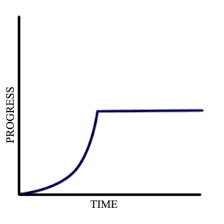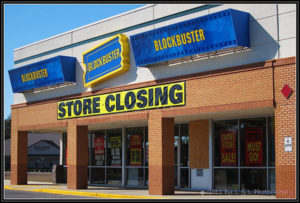Has your brand hit a plateau? Or is it growing erratically? Does fostering growth seem harder than it should be?
Here are 5 common mistakes that could be holding your brand back.
- No clear brand definition.
Can you explain your brand clearly and concisely to a prospect? If you struggle with its description, chances are you haven’t taken the time to define your brand.
A brand definition or statement describes what your brand does, who it helps, and what the benefit is to your customers. It focuses on the problem your brand solves.
Febreze eliminates unpleasant household odors.
Google aims to “organize the world’s information and make it universally accessible and useful.”
Having a clear brand definition positions your brand for success by serving as a guideline for marketing decisions. The litmus test for these decisions becomes: does it serve the brand as it is defined?
A good brand definition often leads to new product ideas and additional revenue streams. Febreze has a portfolio of products including fabric refresher sprays, home air fresheners, candles and car air fresheners.
- Basing your brand definition on a product.
Notice that the Febreze brand definition says nothing about sprays or air fresheners. The Google definition does not mention a search engine.
Why?
Because brands defined by a product confine the business. A true brand has a purpose. The purpose motivates all of the brand’s constituencies –management, employees, vendors, distributors – and of course, customers.
Brand definitions predicated on a single product can also lead to the premature death of a brand.
Remember Blockbuster?
Blockbuster was a video rental company, instead of trying to be an on-demand entertainment brand. They kept expanding their videotape and DVD rental outlets and ignored Netflix’s rise. By the time Netflix got on their radar it was too late, and their business became obsolete. Blockbuster declared bankruptcy in September 2010 and closed their last 300 stores in November 2013.
Here are two more solid brand definition examples:
Starbucks aims to be “A place for conversation and a sense of community. A third place between work and home.” Note no mention of coffee.
Fitbit is “the world’s largest fitness social network” meant “to empower and inspire you to lead a healthier, more active life.”
- No emotional connection.
Emotion is an integral part of a successful brand and a strong differentiation tool.
Customers come to your brand not only to solve their problem, but to experience the feeling that having the problem solved gives them. It could be relief, empowerment, joy, nostalgia, confidence, or reassurance, to name a few.
Understanding the emotion your brand evokes and communicating it will let customers know that you understand them. Consider how it has helped build some marquis brands:
Just do it. – Nike (empowerment)
The happiest place on earth. – Disney (joy)
Pepperidge Farm remembers. (nostalgia)
What happens in Vegas, stays in Vegas. (relief, freedom)
- Not understanding why your customer buys your brand.
If you find yourself cramming a laundry list of product features and benefits into your marketing, then you may be uncertain about why your customer buys your brand.
Chances are that your product shares many features and benefits with your competitors’ products. It’s the problem your brand solves, the emotion that your brand evokes and the image that your brand conveys that differentiate your brand and that draw customers in.
To understand why customers buy from you, you need to talk to them. Find out when and why they seek out your brand. Ask them to tell you stories about their experiences with your brand.
Customer insights help clarify the value of your brand to its audience and highlight points that will resonate in your marketing.
- Treating new customers better than existing ones.
Major pet peeve alert here. It drives me crazy when brands make offers to new customers that they will not honor for existing customers.
You may think that you don’t need to offer your new-customer deal to customers already buying from you. After all, they are already paying full price, right? You don’t want to lose that margin from people who are already sold on your brand.
Here’s why that rationale is faulty and dangerous.
The cost of acquiring a new customer exceeds the cost of upselling a customer or generating repeat business.
Why would you make current customers feel less valued than new ones? The new ones are a gamble. The existing ones already have a relationship with your brand. The incremental cost of deepening that relationship is much less than acquiring a new customer.
And the benefit to your brand is much greater, not only in terms of repeat business but also in word-of-mouth advertising.
Newspapers that offer six-month delivery at half price for new customers but won’t give a break to current customers are just asking for lapses in subscriptions. Groupons that apply only to new customers at restaurants, hair salons or yoga studios only serve to disenfranchise the regulars there.
Offer your best deal to all customers. Always.
If you liked this post, you’ll love the next one.
To have future posts sent to your inbox...



Really helpful for those entry level entrepreneurs, though it brought some confusion in the 5th point which says about customers. Anyway the comment in the end managed the confusion 🙂
Glad you found it helpful, Vishnu, and that in the end the 5th point became clear.